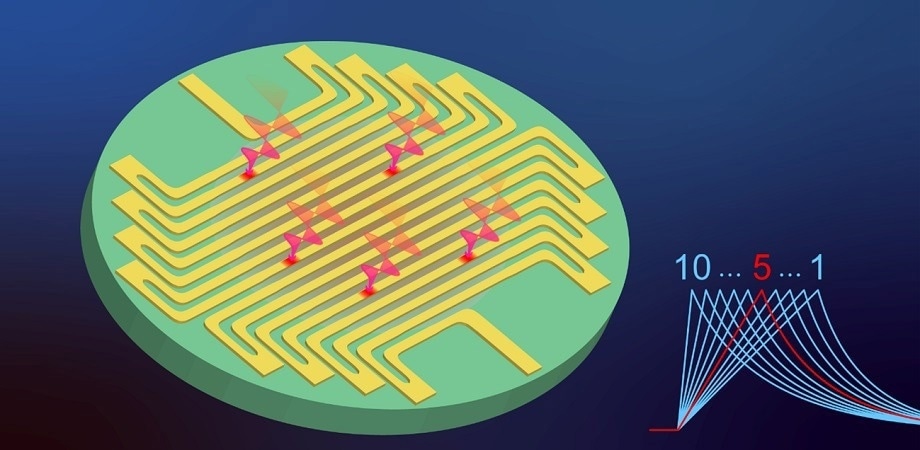An increasingly common tactic in quantum information technology is the use of single photons as qubits. In many quantum systems, such as quantum metrology, quantum computation, and quantum communication, it is essential to determine the photon count precisely.

Superconducting microstrip photon-number-resolving detector. Image Credit: Ling-Dong Kong (SIMIT)
To achieve this accuracy, photon-number-resolving detectors, or PNRDs, are essential. They have two primary performance indicators: dynamic range, which indicates the maximum resolvable photon number, and resolving fidelity, which gauges the likelihood of accurately recording the number of incident photons.
The state-of-the-art single-photon detection technology is thought to be Superconducting Nanostrip Single-Photon Detectors (SNSPDs). They provide fast performance and almost flawless efficiency.
Nevertheless, SNSPD-based PNRDs have had difficulty striking a compromise between dynamic range and fidelity in terms of photon-number resolution. Existing fidelity-constrained array-style SNSPDs split incident photons among a finite number of pixels. For this reason, these detectors are called quasi-PNRDs.
When a photon is absorbed, SNSPDs work by severing the local superconductivity of a small, cooled, current-biased strip. As a result, a hotspot, a localized area of resistance, is formed. The current results are then directed through a load resistor, producing a detectable voltage pulse.
As a result, an SNSPD with a long enough superconducting strip can be thought of as a cascade of thousands of elements, and n- non-overlapping hotspots should result from n-photons simultaneously activating various elements. Nevertheless, the narrow dynamic range of standard SNSPDs with modified cryogenic readouts limits their ability to resolve only 3–4 photon numbers.
Researchers from the Chinese Academy of Sciences' Shanghai Institute of Microsystem and Information Technology (SIMIT) have improved SNSPDs' capacity to resolve photon numbers, as reported in Advanced Photonics.
They overcame readout electronics timing jitter and bandwidth constraints by increasing the total inductance or strip width. As a result, the response pulses stretched rising edges and increased signal-to-noise ratio improved, improving readout quality.
Using the superconducting microstrip single-photon detector (SMSPD), the researchers have demonstrated the first observation of true-photon-number resolution up to 10 by extending the superconducting strip to a micrometer size.
Surprisingly, they were able to get these outcomes without the need for cryogenic amplifiers. For 4-photon events, the readout fidelity achieved an astounding 98%, and for 6-photon events, 90 %.
In addition, the researchers suggested a dual-channel timing configuration that would allow for real-time photon-number readout. This method greatly decreased the number of data-gathering steps by three orders of magnitude while also making the readout setup simpler.
By developing a quantum random-number generator based on sampling the parity of a coherent state, they also illustrated the usefulness of their system in the field of quantum information technology. This technique guarantees objectivity, resilience to noise from the environment and poor experiments, and security against listening in.
The field of PNRDs has advanced significantly as a result of this research. More advancements in SMSPD detection efficiency could make this technology widely available for a range of optical quantum information applications.
These findings demonstrate the possibility of using SNSPDs or SMSPDs to achieve great dynamic range and high-fidelity photon-number resolution.
Journal Reference
Kong, L.-D., et.al., (2024). Large-inductance superconducting microstrip photon detector enabling 10 photon-number resolution. Advanced Photonics. doi.org/10.1117/1.ap.6.1.016004
Source: https://spie.org/#_=_